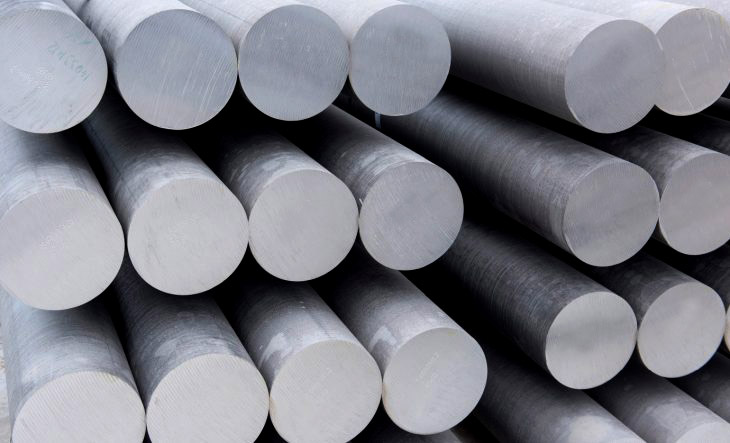Simply put, the aluminum extrusion process is the process by which aluminum is shaped. The extrusion process uses a raw form of aluminum, called a billet or log of aluminum. The billet is heated to a specified temperature where the aluminum becomes soft and malleable and transferred to a press container. The press then forces the aluminum billet through the container by applying significant pressure, squeezing it through a die in the final shape. The extruded part then passes through various stations where it can be cooled, stretched, and cut to the desired length. An essential component of the extrusion process that allows the aluminum to achieve a specific desired shape is the die. Read on to learn more about the types of aluminum extrusion dies available and the role they play in how aluminum extrusions are made.
What Are Extrusion Dies?
Dies used in the aluminum extrusion process can be made into virtually any shape that is desired by the user. Typically, the die will be made from a highly durable steel material that features an opening cut through it. The steel will usually be heat-treated so that it is able to withstand the high temperatures and pressure of the hot aluminum being extruded. The opening of the die is incredibly important in how aluminum extrusions are made, as it features the exact shape and size of the intended cross-section for the final extruded aluminum products. There are, in general, two main types of extrusion dies: hollow dies and solid (or flat dies). Hollow dies will create a hollow extruded aluminum piece, while a solid die will produce a solid extruded aluminum shape. There is also an option to create a die that features a combination of the solid and hollow dies if needed.
Solid Aluminum Extrusion Dies
The main purpose of a solid die is to create an extruded aluminum piece that is a single, solid piece – meaning that you will not find any enclosed voids or semi-hollow conditions. Instead, solid dies feature one or possibly more apertures or orifices through which the heated and softened aluminum will be extruded. Solid aluminum extrusion dies tend to be the less expensive option for the aluminum extrusion process when compared to other die types and can create products such as aluminum angles, channels, flat stock, or rods. It takes a combination of steel plates working together to produce a solid profile called the “die stack,” they include: the feeder plate which controls the flow of aluminum through the die opening; the die plate which forms the actual shape; the backer plate which supports the die and helps stop collapse or distortion of the shape, and the bolster to support the extrusion load being transmitted from the backer and die.
Hollow Dies
Hollow dies produce a profile that features one or more voids – such as a simple tube with a single opening, or more complex extruded aluminum pieces with numerous detailed voids. There are a number of different hollow die forms, with the most common being portholes, bridges, and spider dies. Because of their potentially complex designs, manufacturing costs and methods used vary greatly. The die set for a hollow die differs from a solid die, it has what is called a mandrel inside the die with two or more portholes, a die cap to make the shape, and a bolster to support the extrusion load.
Semi-Hollow Dies
Semi-hollow aluminum extrusion dies will extrude aluminum that is nearly hollow by only partially enclosing a void during the aluminum extrusion process. Die sets for semi-hollow dies will include a mandrel with portholes, in addition, to die caps and bolsters.
Custom and OEM Aluminum Extrusions From Eagle Aluminum
Eagle Aluminum is a manufacturer, stocking warehouse, and supplier of custom and OEM aluminum extrusions. If we don’t have the extruded aluminum part that meets your specifications, our professionals will help you create and engineer one to meet your needs. Our custom and OEM extrusion services enable us to meet nearly any aluminum extrusion needs our customers may have. Contact our experienced customer service team today.


